Equestrian Statue of Charles I
Bronze
by Hubert Le Sueur.
1633.
Charing Cross.
Looking down Whitehall to his place of execution.
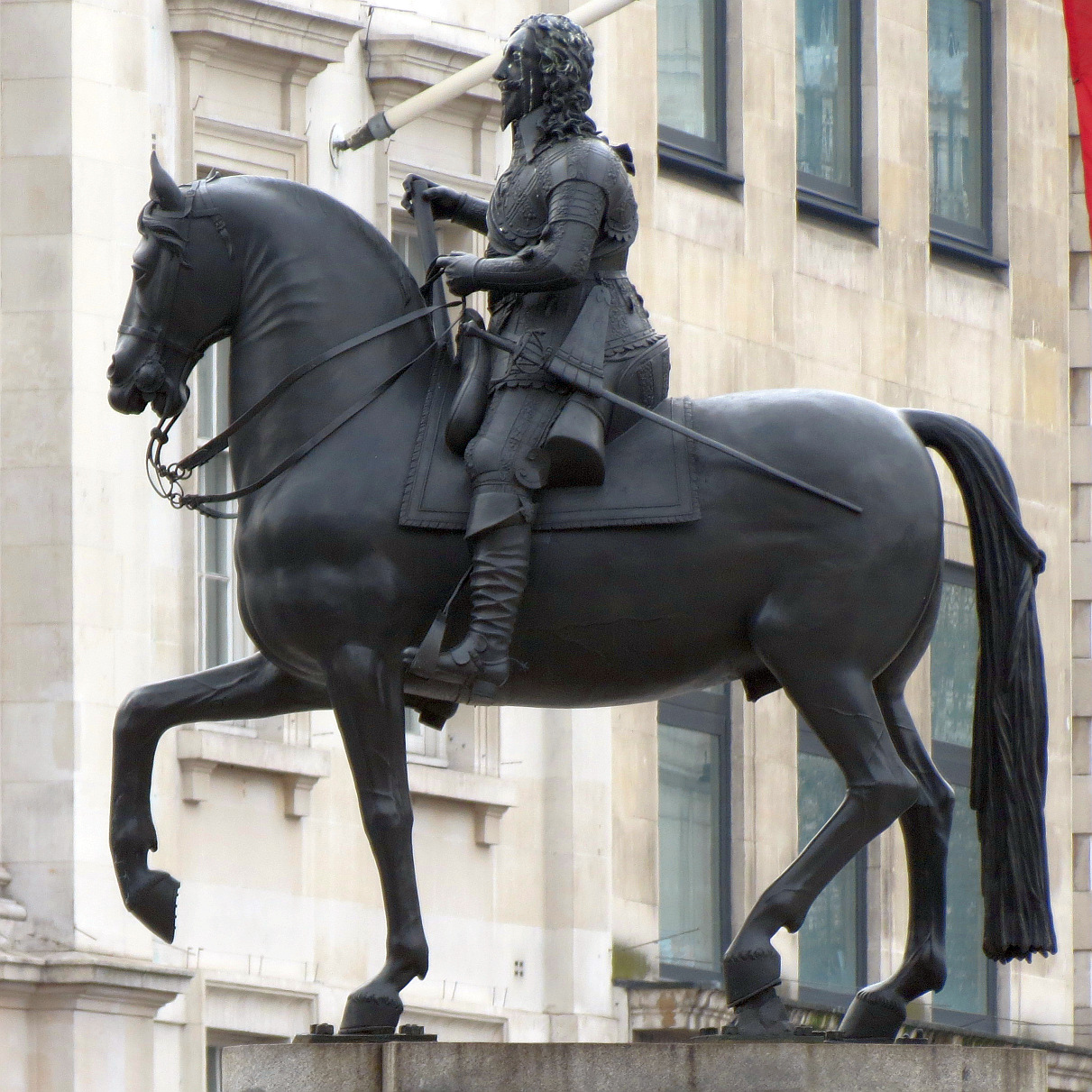
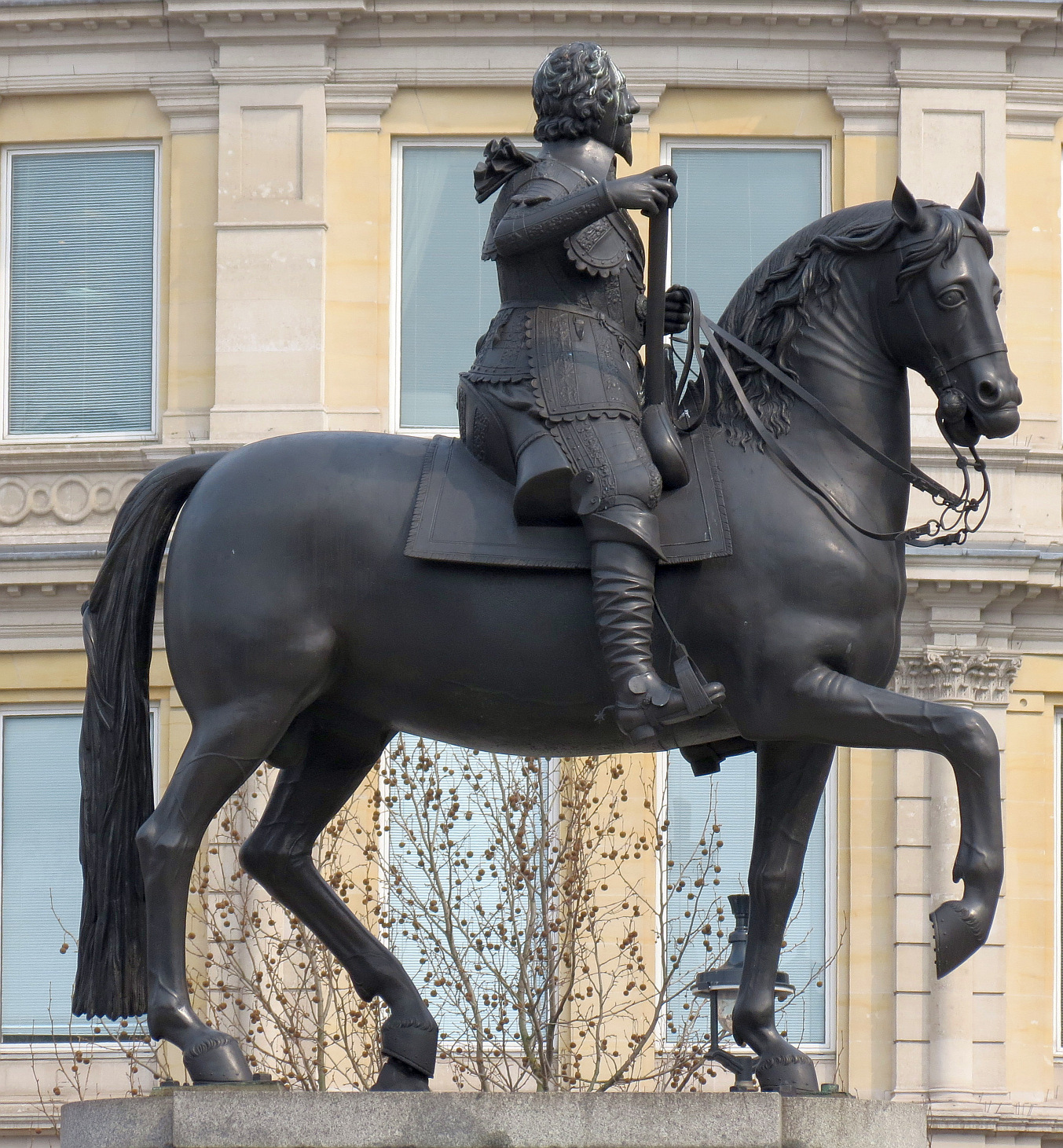
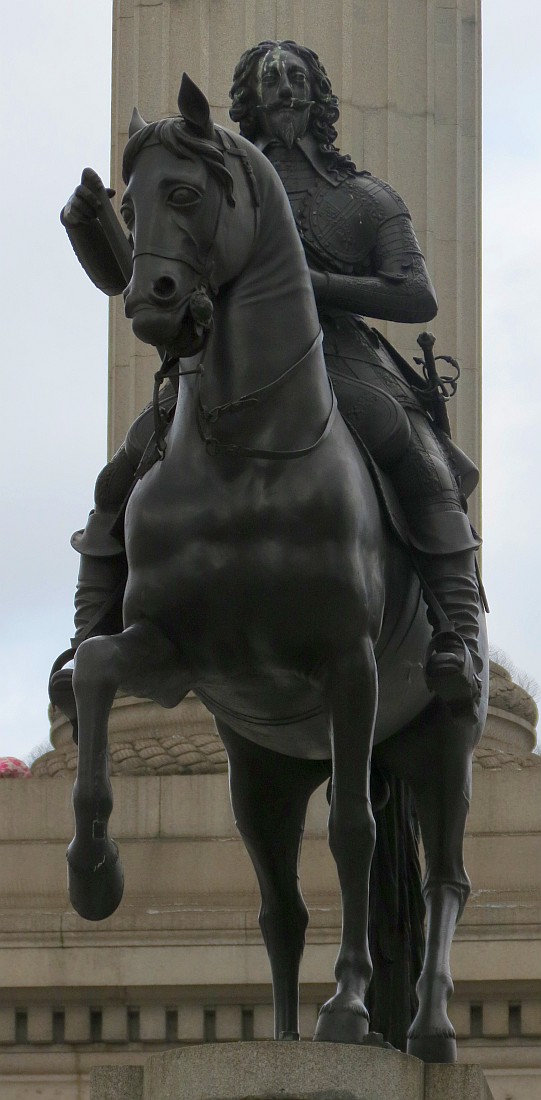
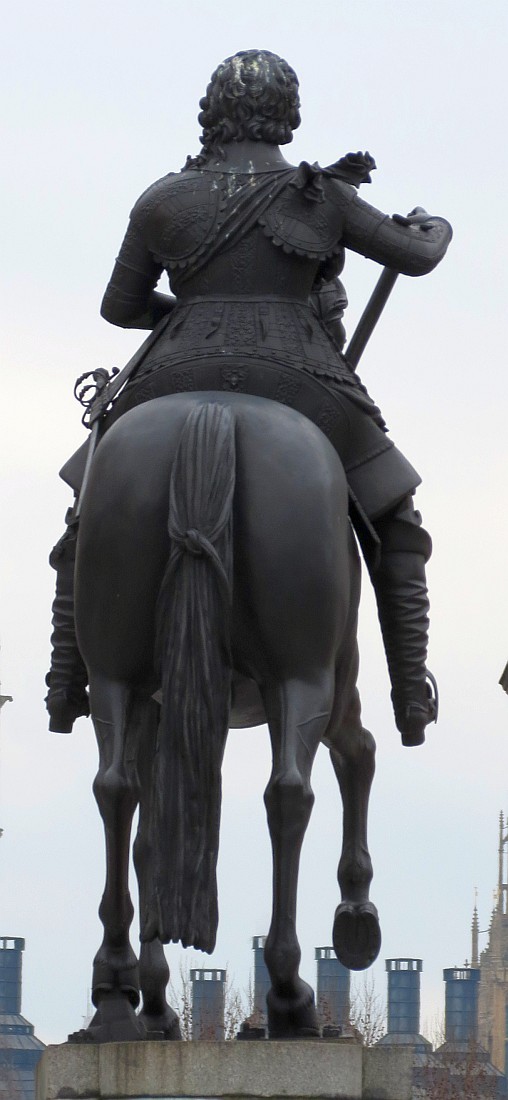
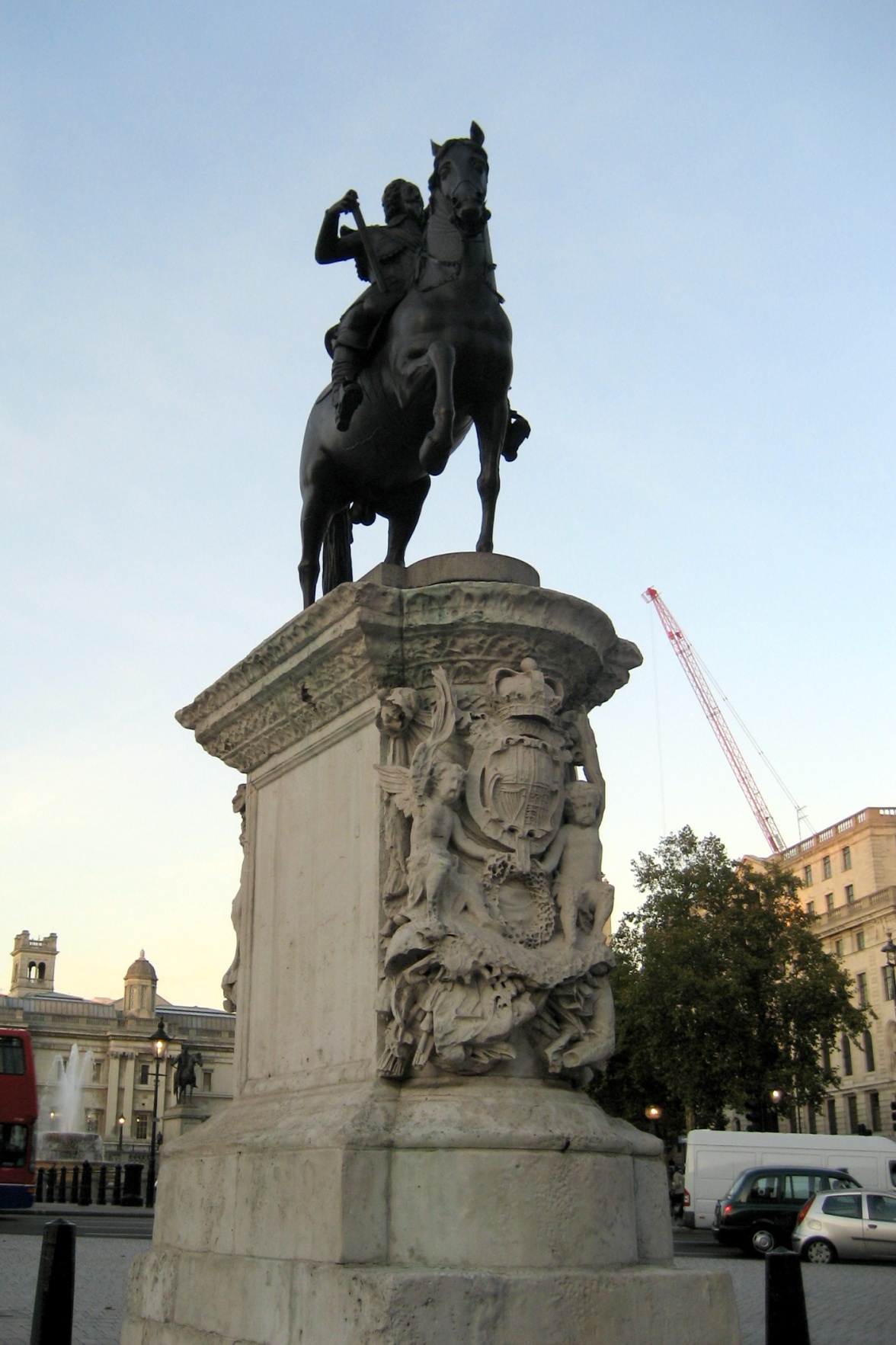
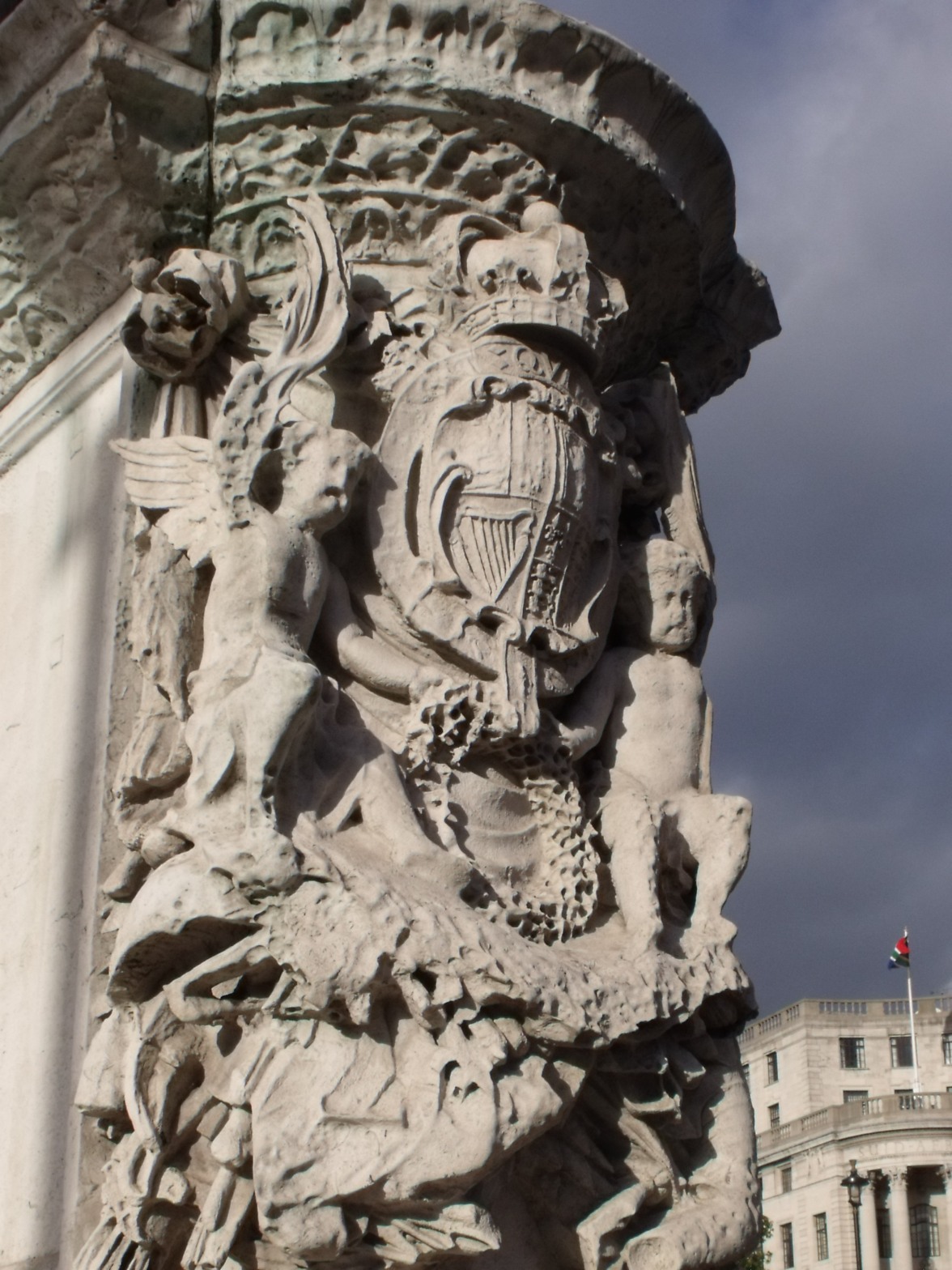
These photographs lifted from https://stlukesheritage.wordpress.com/category/charles-i/
______________________________________
The Royal Collection Bronze Equestrian Statuette of Charles I
Hubert le Sueur

size 33.0 x 27.0 x 11.0 cm (excluding base/stand)
Gilt-bronze equestrian statuette of Charles I depicted in full armour, holding a staff in his right hand. Set on an ebony plinth with bronze foliate borders inset with a gilt bronze roundel of St.George and Dragon. Related to Hubert Le Sueur's equestrian statue of Charles I from circa 1633, this is probably the first bronze reduction of an equestrian portrait of an English sovereign and it has been suggested that it could be identified with Charles I's 'picture of horseback upon a black wooden Peddistall belonging to - Sommersett House' listed in the Van der Doort's inventory from circa 1639.
Provenance
Bought by H.M. Queen Elizabeth The Queen Mother in 1947 (from Collection of Mary, Lady Millais). Bought by the Prince Regent (Lord Yarmouth) at Squibbs auction 1813. Possibly belonged to Louis XVI based on design for statue XV in the Palace Royale Rouen 1776 (never executed).
___________________________________________

Northumberland House behind
Engraving
Royal Collection
__________________________
__________________________

Bronze Equestrian Statue of Charles I (1600 - 49) by Hubert Le Sueur (1580 - 1670).
by
Wenceslaus Hollar (1607 - 1677),
Etching, mid 17th century.pub. Henry Overton.
Plate size - 395 mm x 310 mm.
Etching, mid 17th century.pub. Henry Overton.
Plate size - 395 mm x 310 mm.

Anonymous Engraving of Charles I.
Lettered
with title at top left, 'D' at lower right and description in lower margin:
"This Portraiture was drawne from the magnigicent Figure cast in brasse by
that most famous Artist Monsieur Le Sueur Ano Dny 1633 exceeding the Proportion
of the life being almost 10 foot high, and with great hazzard charge & care
preserved under ground by John Revet Brasier living at Holborn Conduit at ye
Diall"
Information
from Christine Stevenson (personal communication, July 2012): By 1644 Richard
Weston, Earl of Portland and Charles I's former Lord Treasurer, was dead and
the statue of Charles I which he had commissioned from Le Sueur formed part of
an estate sequestrated that year. As such it was sold off to a consortium of
Covent Garden residents, including the royal Surveyor Edward Carter; they may
have intended it for the piazza, on the pattern of Paris's Place Royale (now
Place des Vosges), which received its equestrian figure of Louis XIII in 1639.
Richard Weston 1577 - 1635, bought Roehampton House in 1624. In 1628 was made Lord Weston of Neyland, and in 1633 was created First Earl of Portland
Made originally for erection in Weston's Garden at Roehampton House now in the borough of Wandsworth. The Dutch architect Balthasar Gerbier was employed to remodel the house and garden and is believed to have had a hand in commissioning the statue
By 1650 the Council of State was trying to establish who owned the Covent Garden
statue. Carter claimed it, and then sold it to the brazier John Revet, who in
1662 testified that he had been ordered 'by some officer at Whitehall ... to
breake ye said statue in peices to ye end That nothing might Remaine in memorie
of his said Majestie', but he had buried it instead.
The story remained well
known. The even better story, that Revet made a fortune selling cutlery handles
supposedly formed out of the royal bronze to royalists and republicans alike,
is unfortunately not true. (Ball, R. M. 'On the statue of King Charles at
Charing Cross', Antiquaries Journal 67 (1987): 97-101, on p. 97.)
Revet lost no
time in advertising the statue after the Restoration, having an engraving of it
made, 'for publique view in Memory of his said Late Majestie'; its letterpress
underlined his 'great hazard charge & care' in defending this memorial.
(Ball 1987, pp. 100, 99, who believed that no copies of the print had
survived.) He then settled with the Portlands, from whom the king then bought
the piece, for £1600, in April 1675. ( The Treasury papers relevant to the
purchase are calendared in CTB 1669-72, p. 1009 (12 January 1672) and CTB
1672-75, pp. 306 (19 April 1675), 732 (30 April), and 745 (26 May).) It was
subsequently erected, with a new plinth, in what is now Trafalgar Square, where
it remains today.
1792
______________________________
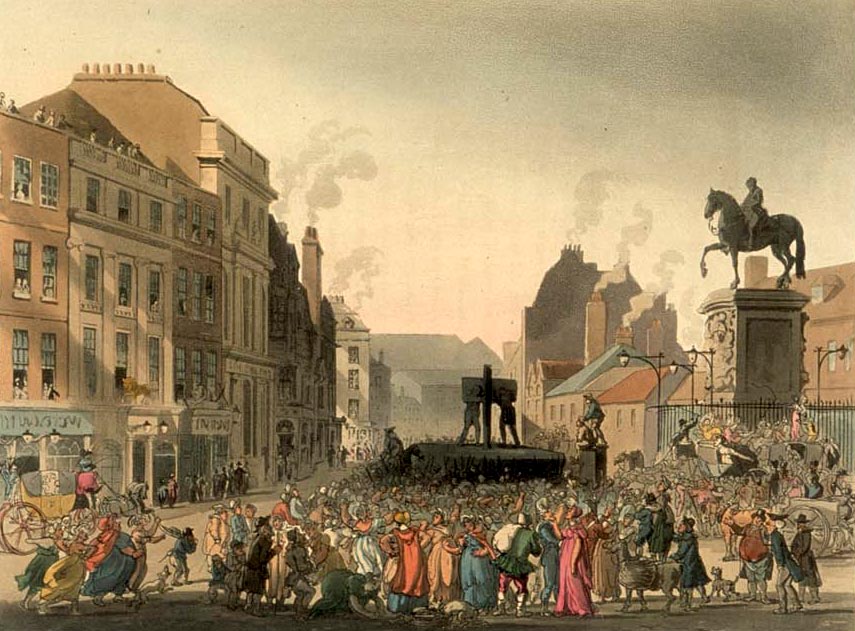
The Pillory Charing Cross. Plate 62 from Micocosm of London, 1809.
_____________________________

Hubert le Sueur
after van Dyck
Mezzotint by Jan van Somer
circa 1670 - 1680.
222 x 172 mm.
Previously in the Collection of Michael Rysbrack - Collection mark at bottom right.
______________________________________
Night by William Hogarth with the Equestrian Statue of Charles I in the background.
British Museum.

1707.
British Museum

Lettered with title on scroll in sky, and with publication line within image at bottom of statue: "London Sold by Iohn Bowles Print and Map Seller over against Stocks Market", and below at right "Sutton Nicholls delin et sculp.
1725.
British Museum.
___________________________________
___________________________________

Maurer
1740.
British Museum.
___________________________________
___________________________________

James Green after Samuel Wale
1761
British Museum
___________________________________________
___________________________________________

1752
British Museum.
________________________________

Print by Thomas Bowles III after Canaletto.
1753
British Museum
____________________________

Charing X by Canaletto
_____________________________

Louis Phillipe Boitard
1756
British Museum
_____________________________________

Thomas Malton 1795
British Museum.
___________________________________

Thomas Malton
1795
British Museum.
____________________________

View in
Charing Cross, with the equestrian statue of Charles I on the right, the Strand
curving away into the distance; a carriage and a cart in the foreground;
illustration from Ackermann's The Repository of Arts, part 26 volume 5. 1811
Etching with hand-colouring
© The Trustees of the British Museum.
_________________________________

Thomas Shotter Boys
View in
Charing Cross; to the left can be seen the portico of St Martin in the Fields,
beside it si Morley's Hotel and beyond that the corner turret of Nash's West
Strand improvement; on the right is Northumberland House with twin lead-capped
turrets and a central lion; in foreground to right is the equestrian statue of
Charles I with 'T.S.Boys 1841' inscribed on the pedestal, a group of boys sit
below, to the left a water cart laying the summer dust, a hansom cab and a
striking pair of equestrians. 1842 Lithograph
© The
Trustees of the British Museum




A mind blowing article is provided here. homeschooling at World Equestrian Center Ocala And it is written with great skill and the words directly explain the thought of author.
ReplyDelete